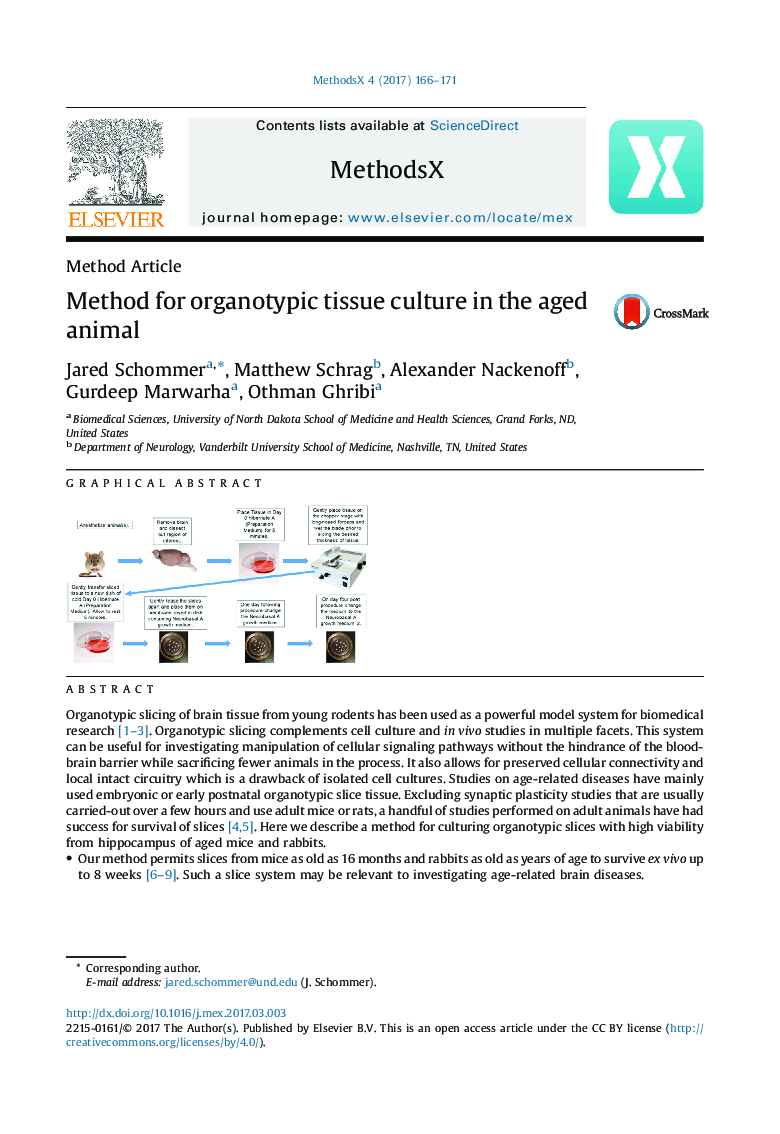| Article ID | Journal | Published Year | Pages | File Type |
|---|---|---|---|---|
| 5518487 | MethodsX | 2017 | 6 Pages |
Organotypic slicing of brain tissue from young rodents has been used as a powerful model system for biomedical research [1-3]. Organotypic slicing complements cell culture and in vivo studies in multiple facets. This system can be useful for investigating manipulation of cellular signaling pathways without the hindrance of the blood-brain barrier while sacrificing fewer animals in the process. It also allows for preserved cellular connectivity and local intact circuitry which is a drawback of isolated cell cultures. Studies on age-related diseases have mainly used embryonic or early postnatal organotypic slice tissue. Excluding synaptic plasticity studies that are usually carried-out over a few hours and use adult mice or rats, a handful of studies performed on adult animals have had success for survival of slices [4,5]. Here we describe a method for culturing organotypic slices with high viability from hippocampus of aged mice and rabbits.â¢Our method permits slices from mice as old as 16 months and rabbits as old as years of age to survive ex vivo up to 8 weeks [6-9]. Such a slice system may be relevant to investigating age-related brain diseases.
Graphical abstractDownload high-res image (130KB)Download full-size image
